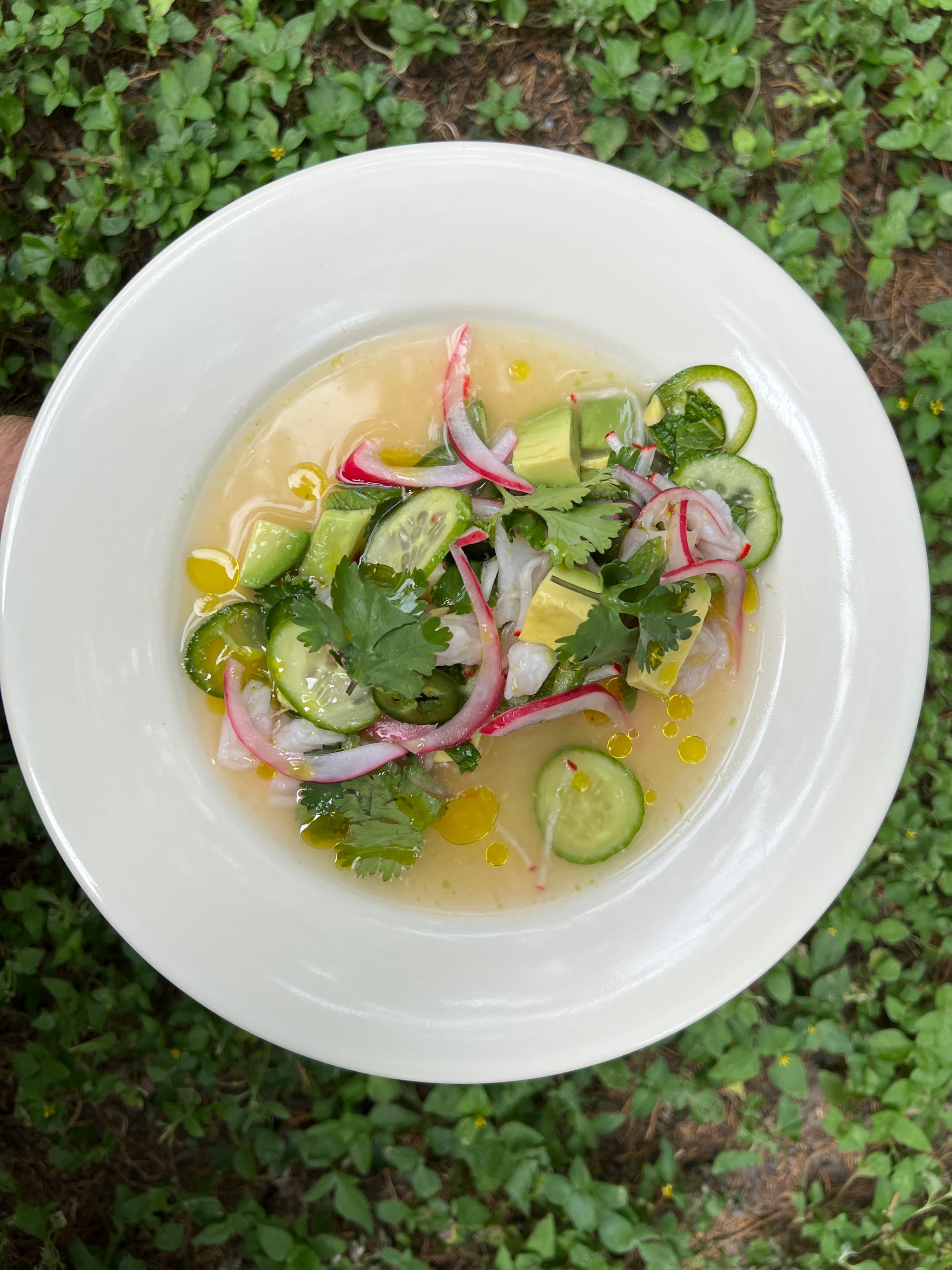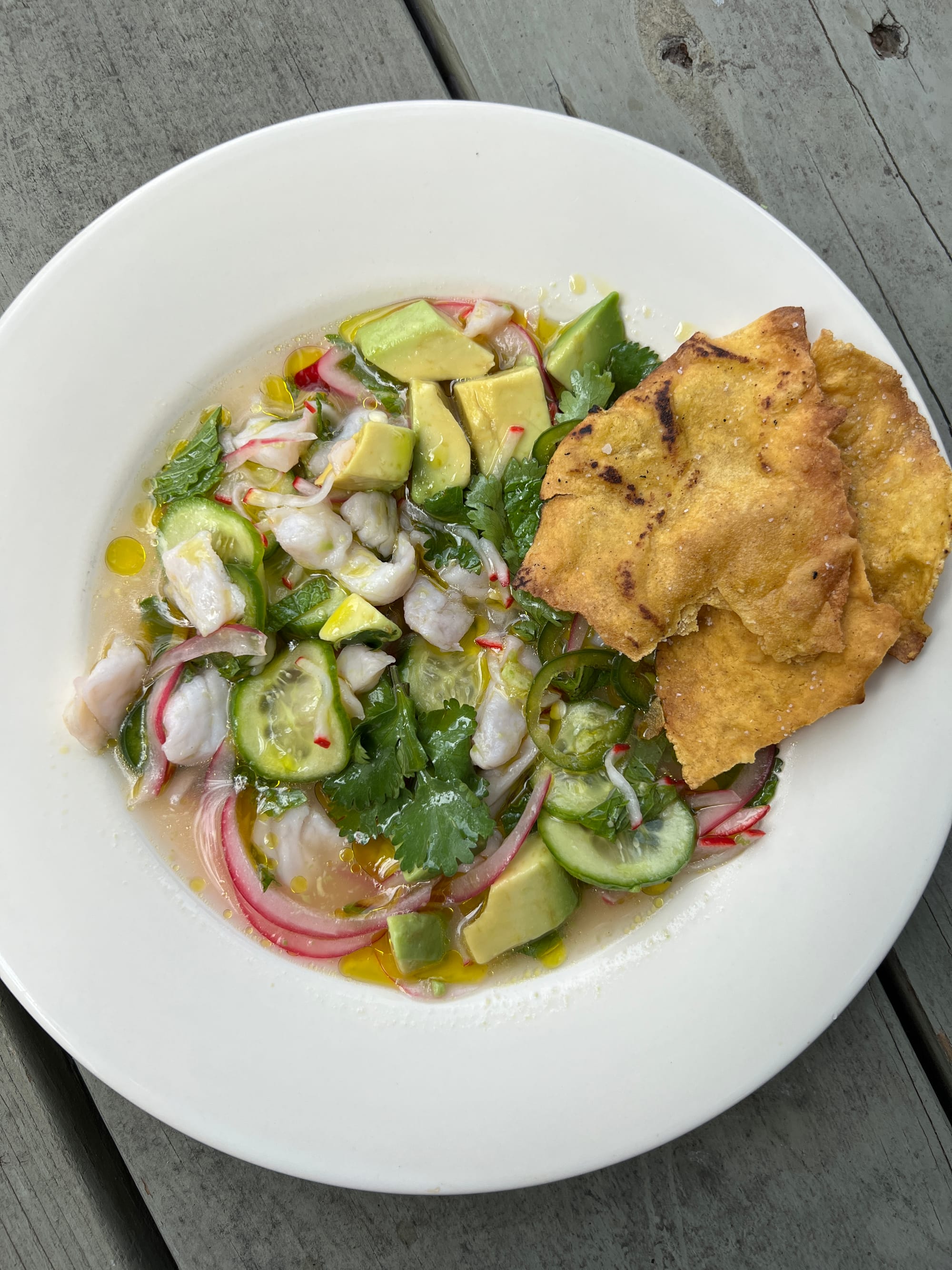Notes
When I cooked at Hartwood, ceviche was not just a signature menu item but also a staple for staff meals. It was one of the few dishes that felt appetizing after working all day in front of hot fires in the tropical Mexican summer heat. Crisp, cool, refreshing, and acidic, it's the perfect summer food.
Ceviche is actually a very easy dish to make, provided you understand the basics. It doesn't even require you to cook anything, per se. It's really just an extended marinade boosted with the flavorings of your choice.
There are lots of types of fish that work here, but they must be high-quality and fresh. Seek out the freshest fish possible at the best local vendor you have.
There are a lot of different fish– many of them widely available– that you can use for ceviche. You want to look for a firm, leaner, white ocean fish. Snapper, grouper, sea bass, and halibut all work well.
The best way to ensure you're getting great fish is to talk to the fishmonger at your local market. Tell them you're making ceviche, and ask for their recommendation based on what's fresh.
Ceviche is a fascinating dish because it "cooks" the fish without actually cooking it. The high levels of acidity in the marinade change the protein structure of the fish in a similar way as cooking with heat. You'll notice that after 20 min or so of sitting in the marinade, the fish no longer appears raw. The texture becomes more firm and the flavor changes.
But this process can also go overboard. Too much marinating time can cause the fish to become chalky and unpleasant. Personally, I find that 15-20 min or so is an ideal marinating time. You can push it up to an hour, but I wouldn't go beyond that.
Ingredients
- 1lb (450g) fresh fish
- 1-1.5 cups (~250g) fresh-squeezed lime juice
- 2 Persian cucumbers, sliced into rounds
- 3 radishes, shaved thin and cut into batons
- 3 tbsp chopped mint
- 5 tbsp cilantro, leaves picked
- 2 jalapeño or serrano chiles, sliced
- pickled red onions (prep these ahead of time, or just use very thinly sliced red onions if you don't have time to pickle them)
- 1 large avocado, diced
- a few tbsp of good finishing olive oil
- salt
- tostadas or tortilla chips for serving
Process
Start by prepping all of your ingredients.
The nice thing about ceviche is that it's very forgiving. The way you prep the various vegetables and herbs is more about presentation than function. I like to cut my cucumbers and jalapeños into rounds, my radishes into matchsticks, and my avocado into large chunks. But you're the boss, so do it however you like.
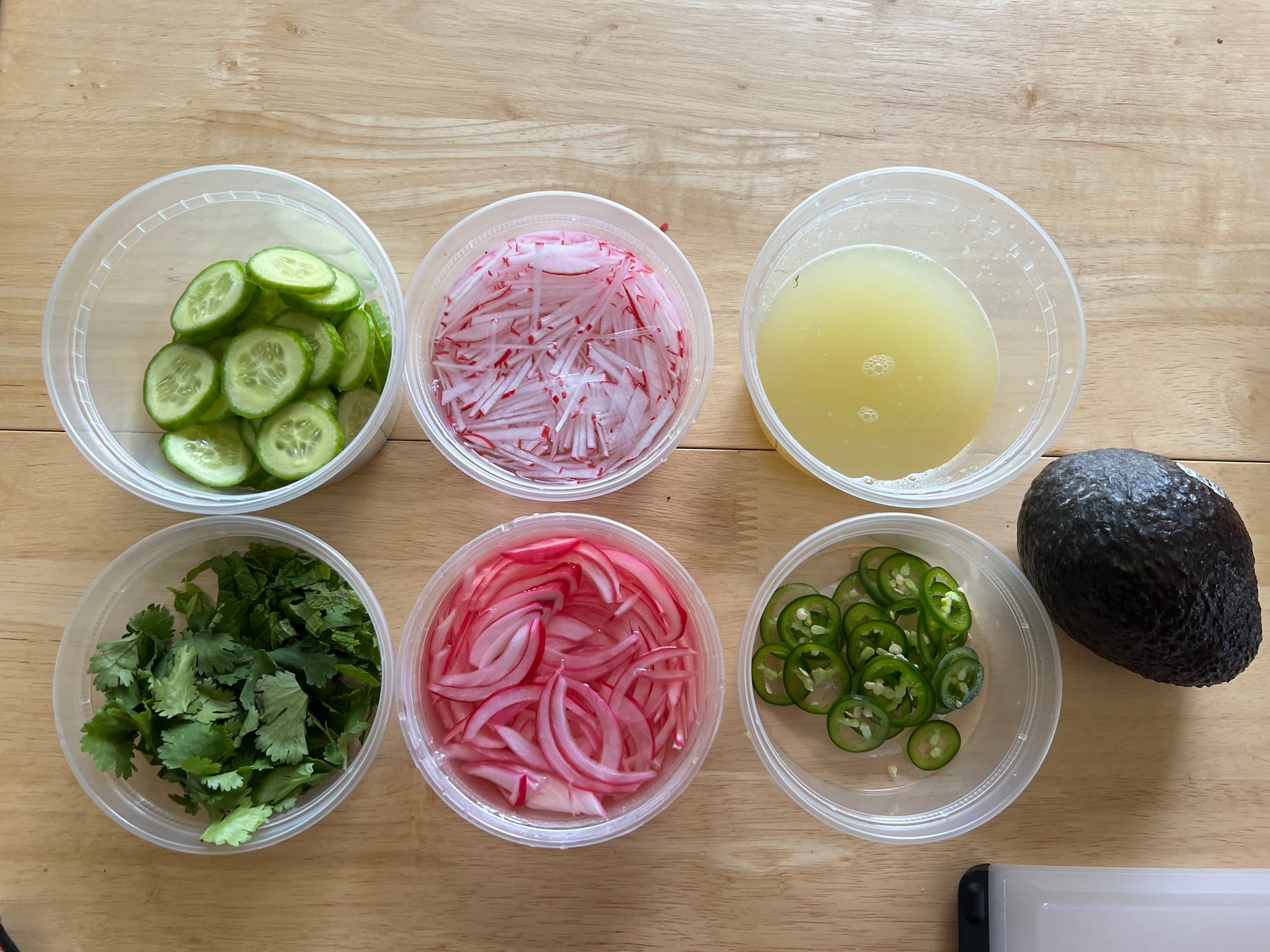
Next, slice up your fish. Some people prefer a more thin, sashimi-style slice for ceviche, while others like to cut the fish into larger chunks. I find that the difference mostly comes down to presentation, so cut it however you prefer.
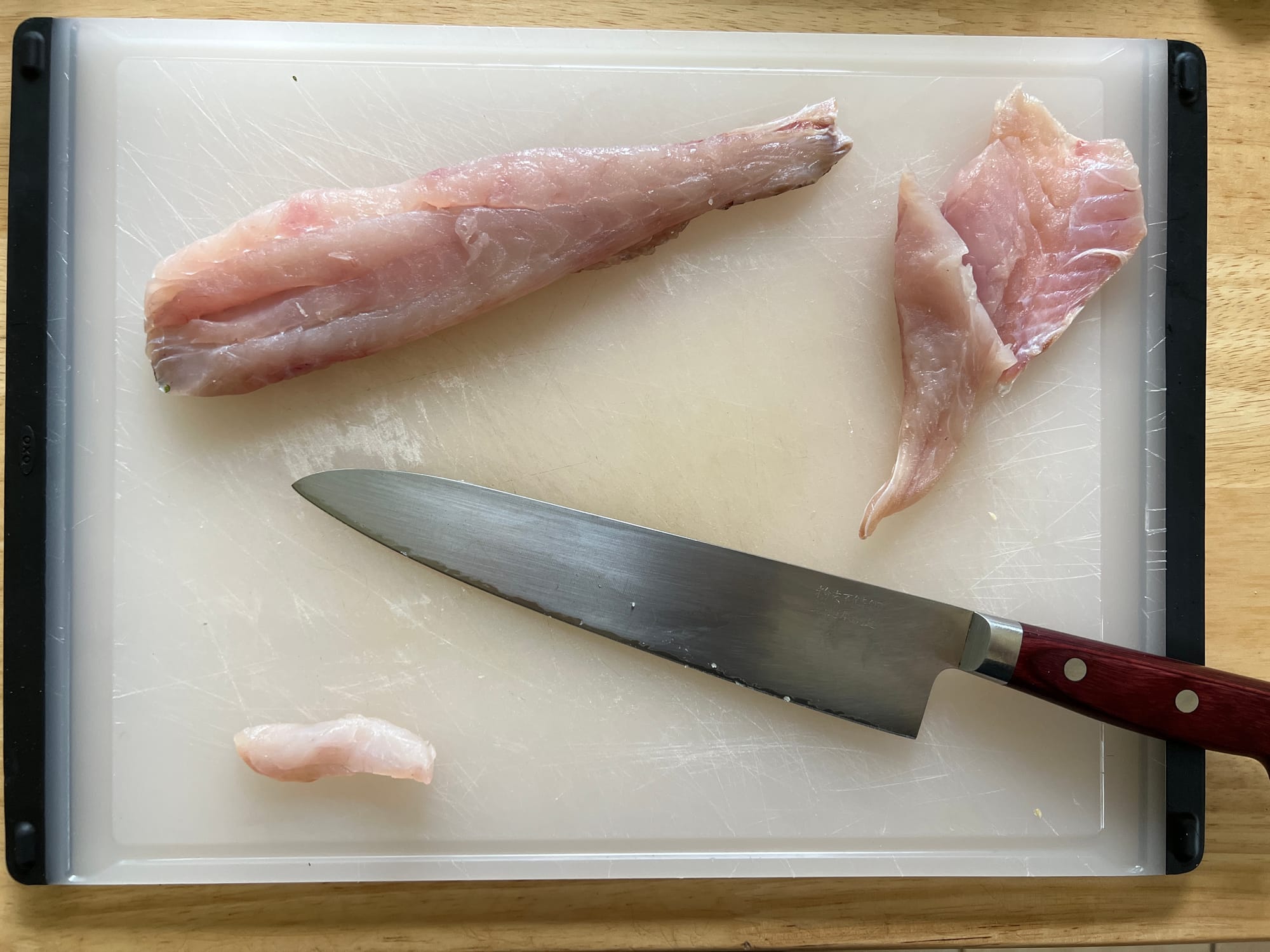
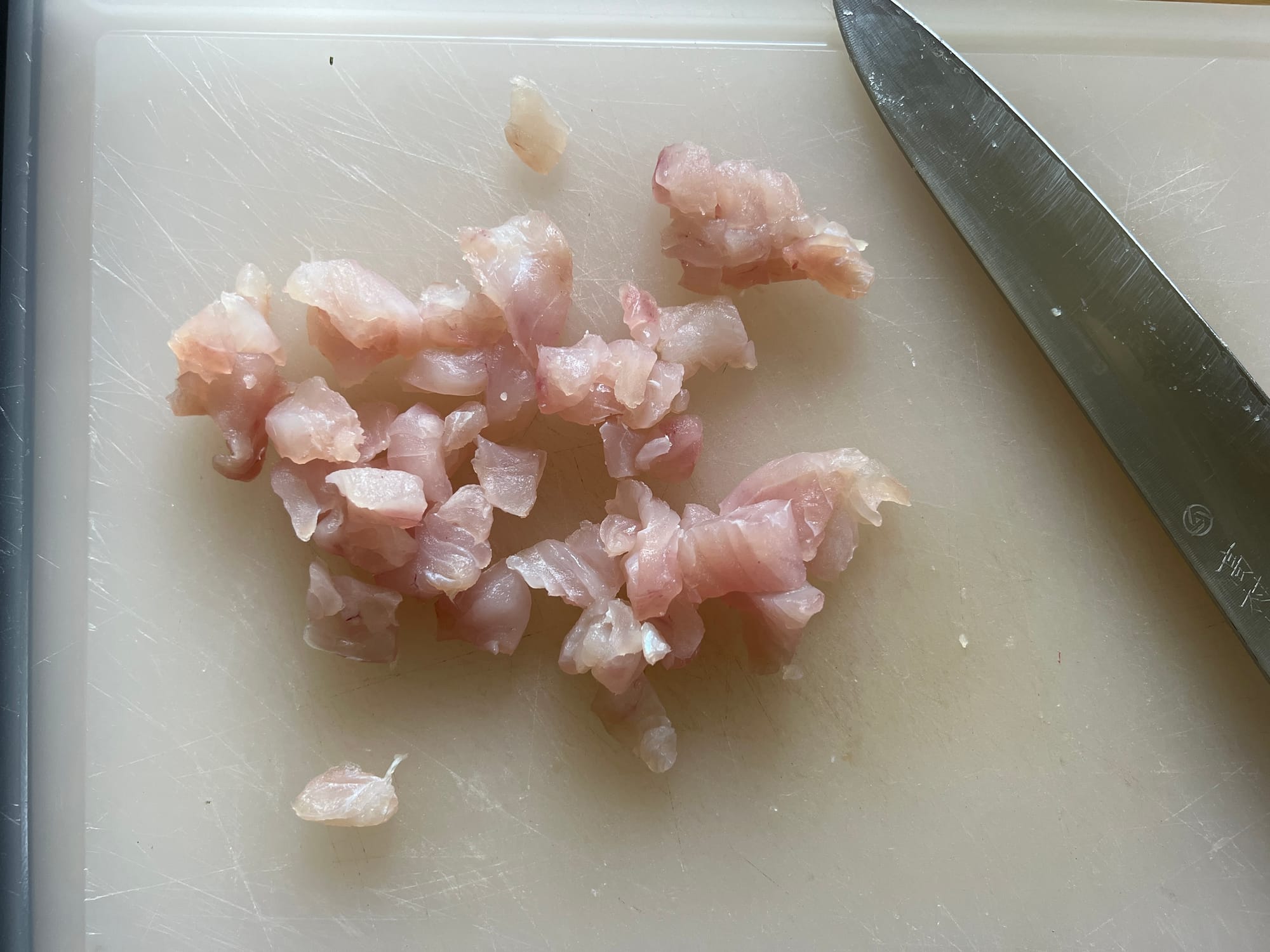
Add your fish to a bowl and season it heavily with salt. You'll want to use a good amount of salt here– it may seem like a lot, but it will help to balance the intense acidity from the marinade.
Add in lime juice– you want enough to mostly cover the fish, allowing it all to marinate evenly.
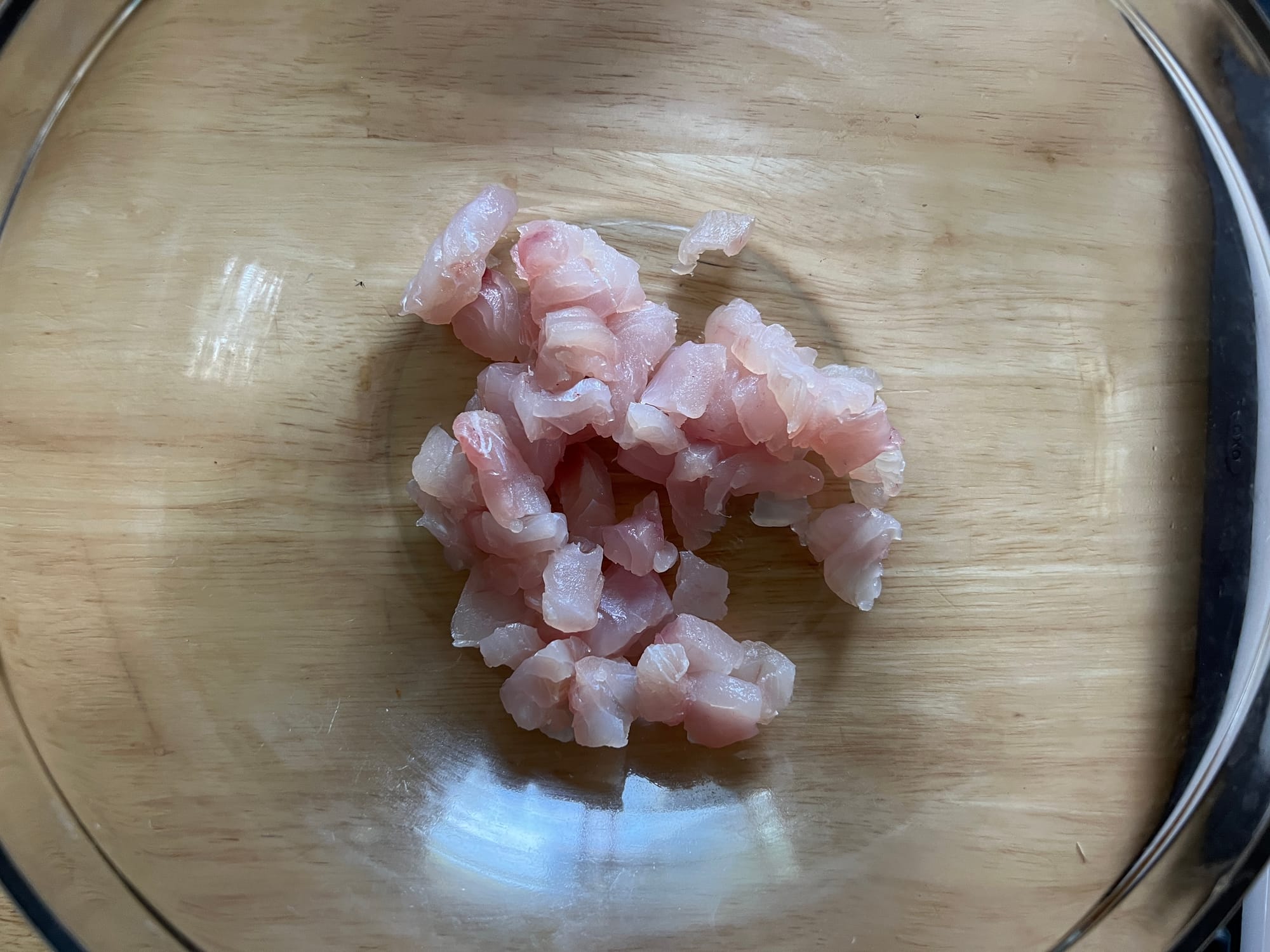
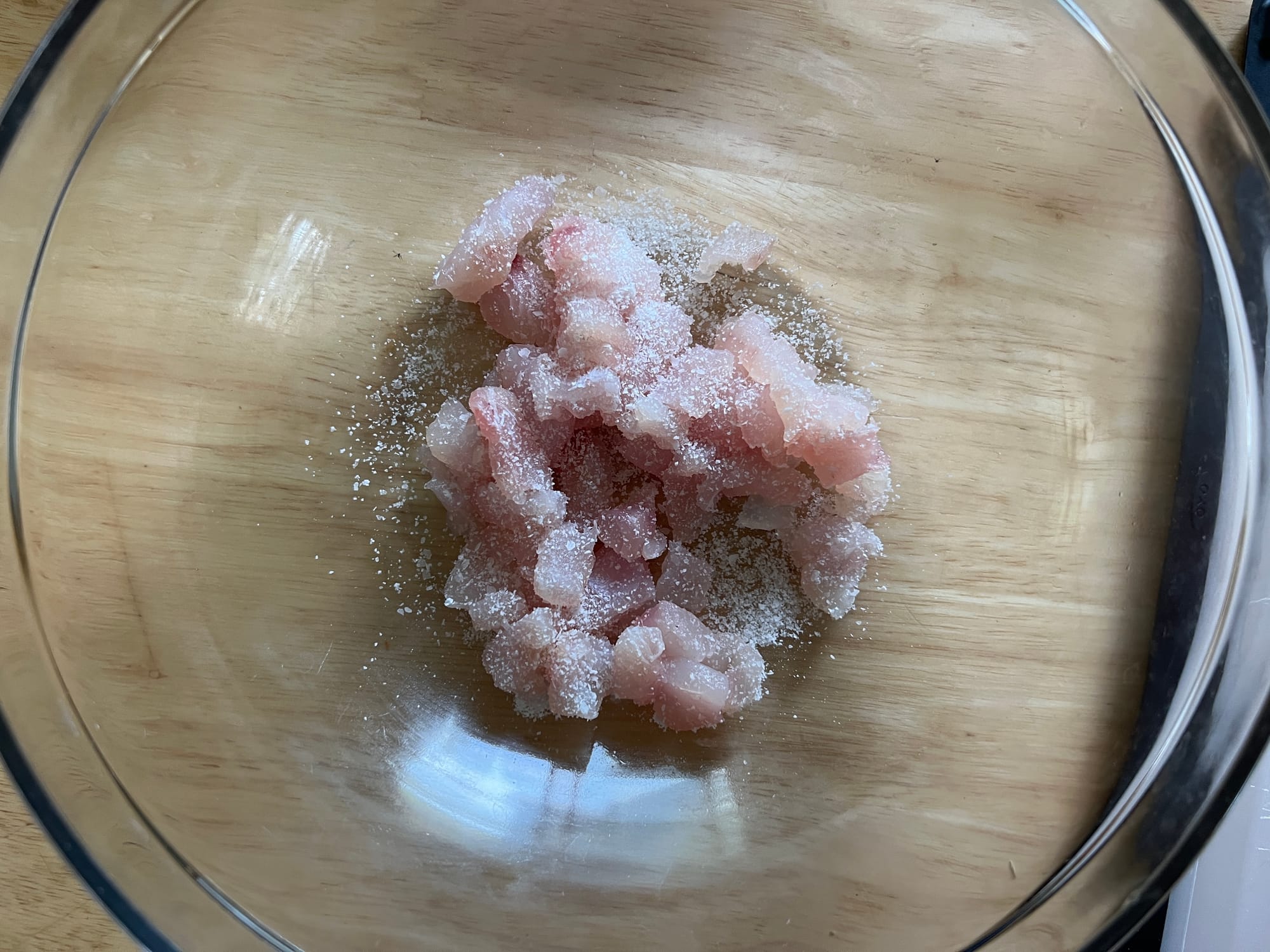
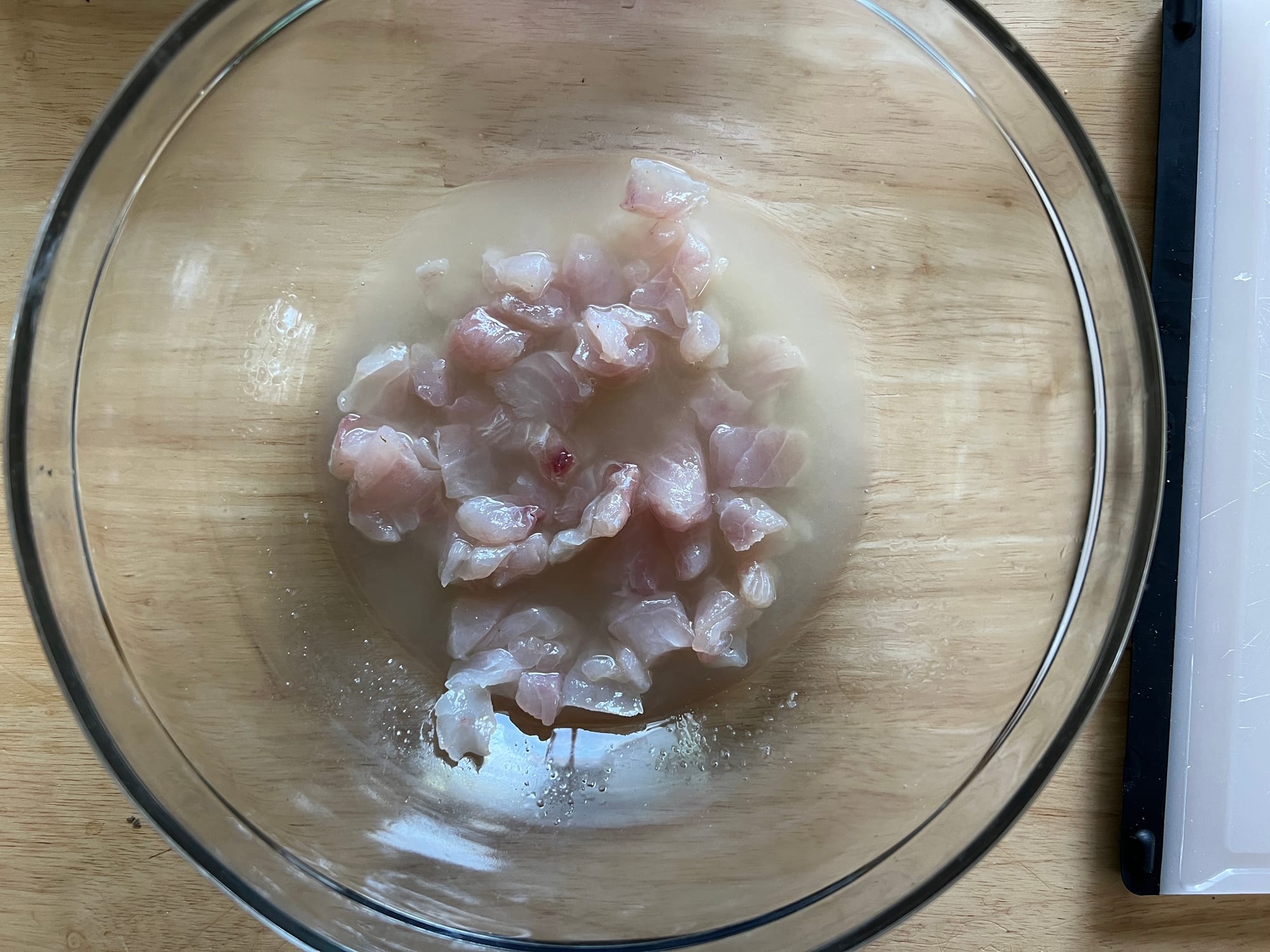
At this point I'll also add in the cucumbers, jalapeños, onions, and radishes. You can add these right before serving if you prefer a more fresh flavor, but I like the ever-so-slight acidic crunch they take on from marinating along with the fish.
Give everything a big stir, and allow it to marinate for 15 minutes.
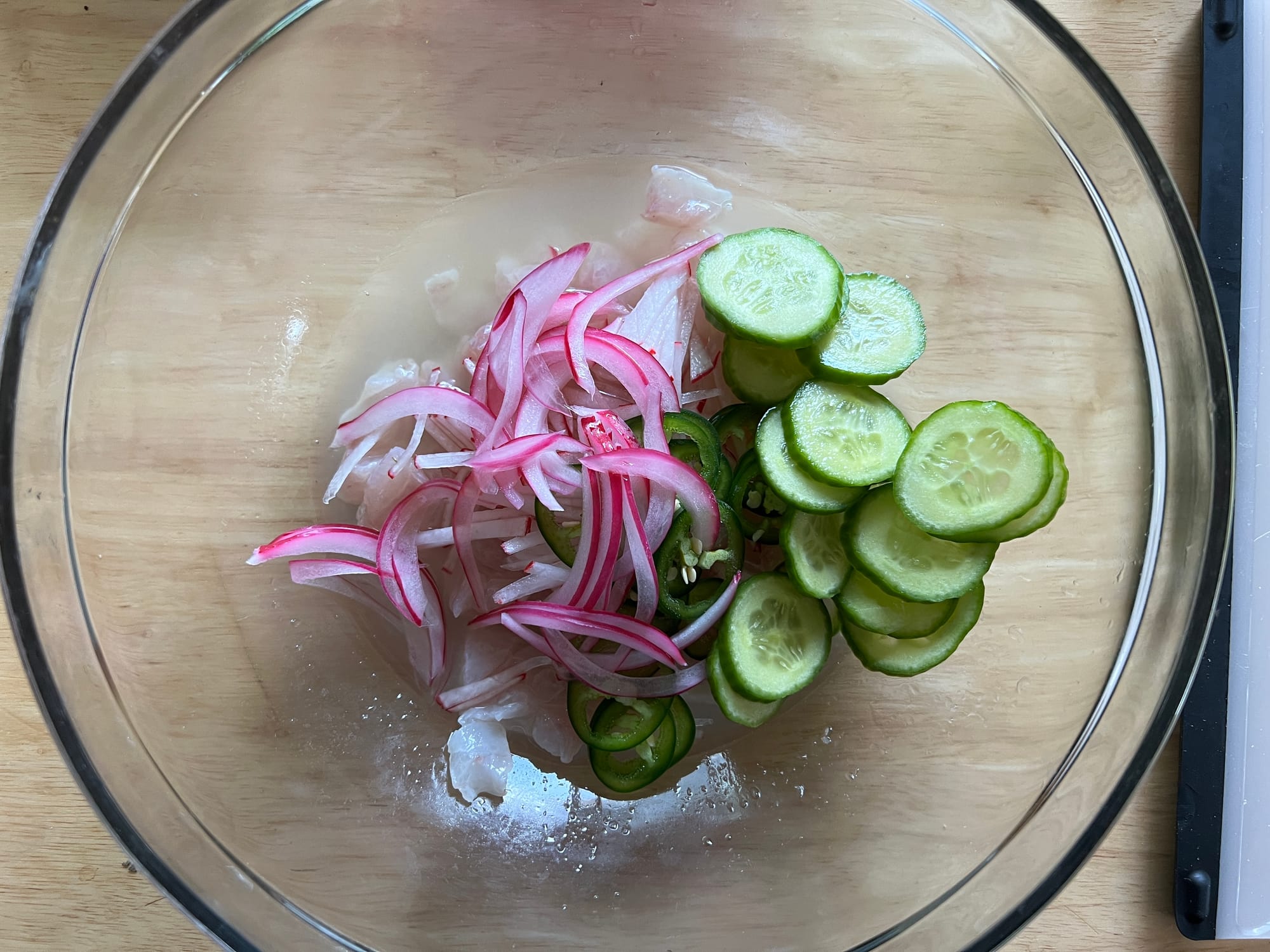
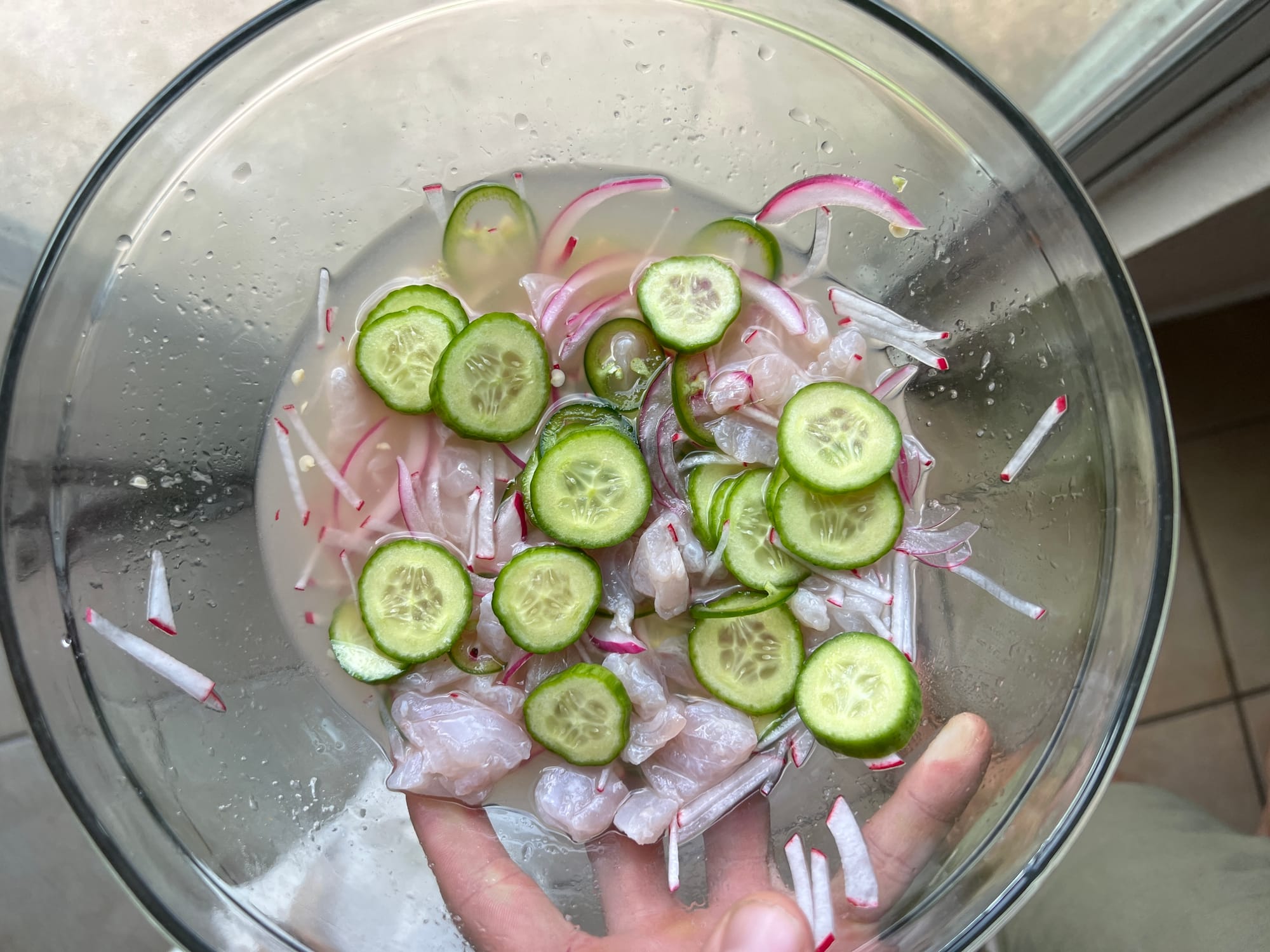
After 15 minutes, try a piece of fish. Adjust for salt as needed. If the texture feels too raw, allow it to continue marinating a bit longer. Check a piece every 5-10 minutes until you've gotten a texture and flavor you're happy with.
Finally, add in the fresh herbs and avocado. Season those with salt, and then stir to incorporate.
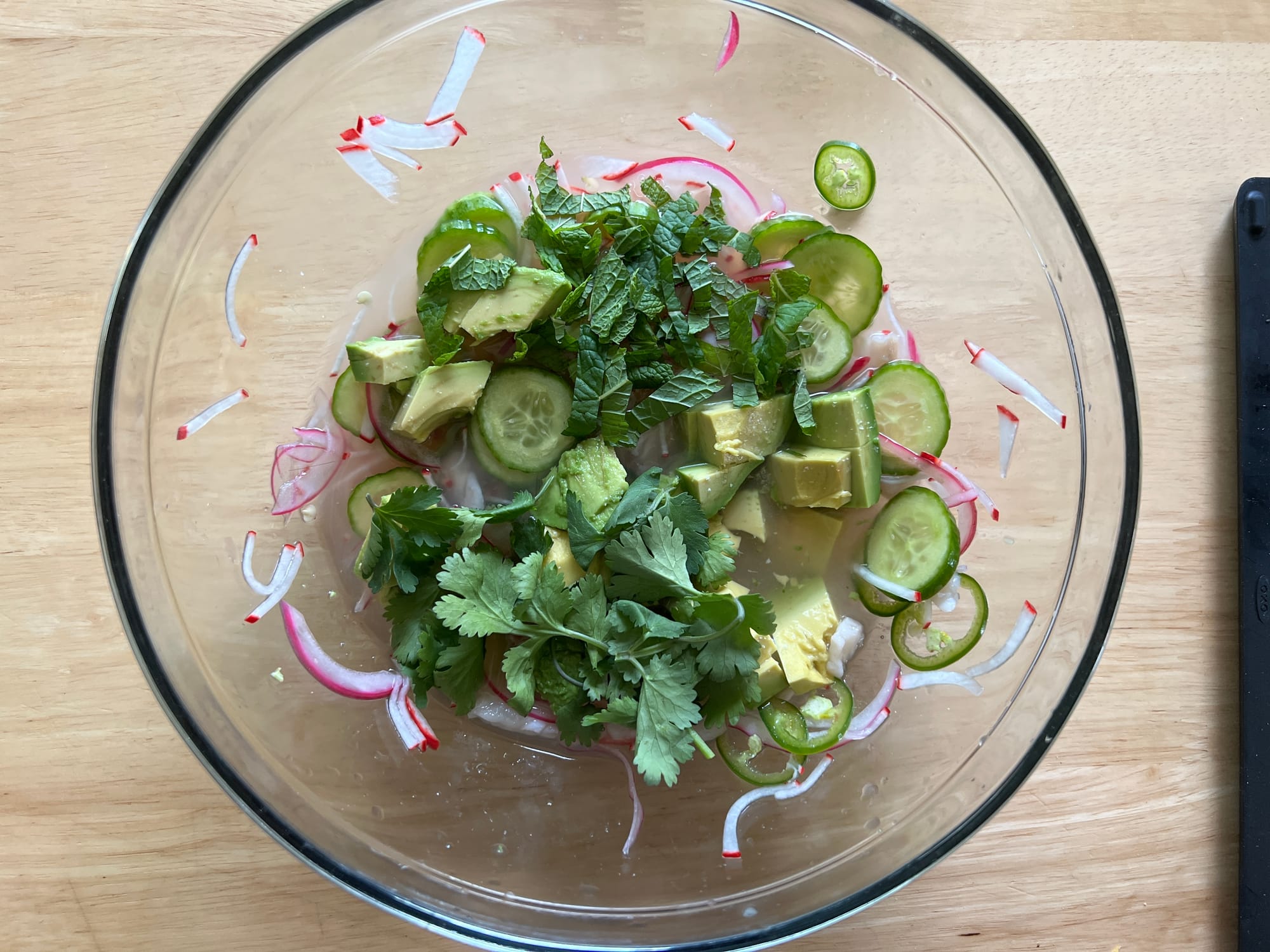
Now, you're ready to plate up.
Ceviche lends itself well to a lot of beautiful presentations. I like to add it to a bowl or plate along with a big ladle of the marinating liquid. I'll finish it with a drizzle of really high-quality, robust olive oil and serve it with tortilla chips or tostadas.
Enjoy!
